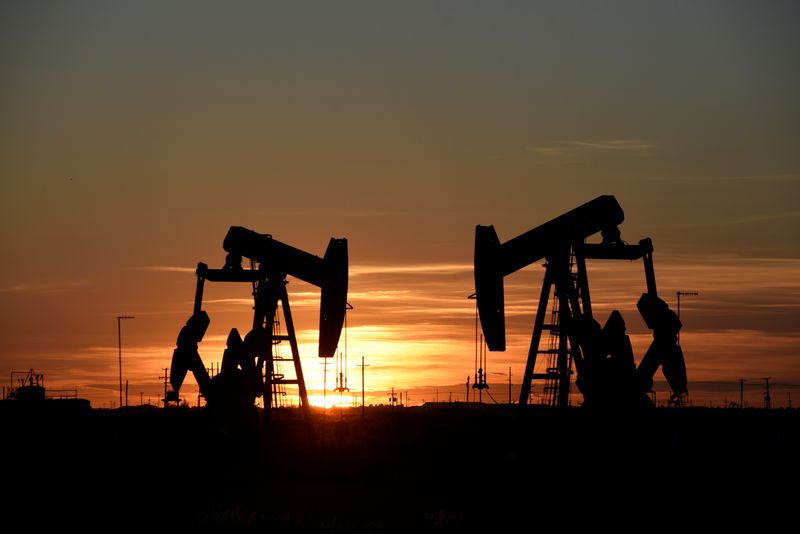By Alex Lawler
LONDON (Reuters) - Oil hit its highest level in a year on Friday, closing in on $60 a barrel on economic revival hopes and supply curbs by producer group OPEC and its allies.
New orders for U.S.-made goods rose more than expected in December, pointing to continued strength in manufacturing. The U.S. Congress is also moving ahead on President Joe Biden's COVID-19 relief plan.
Brent crude was up 63 cents, or 1.1%, at $59.47 by 1200 GMT after hitting its highest since Feb. 20 last year at $59.75. U.S. crude was up 54 cents, or 1%, at $56.77, after reaching $57.09, its highest since Jan. 22 last year.
"The conditions still remain supportive for oil markets," said Jeffrey Halley, analyst at brokerage OANDA. "Oil should find plenty of willing buyers on any material dip."
Brent is on track to rise more than 6% this week. The last time it traded at $60, the pandemic had yet to take hold, economies were open and people were free to travel, meaning demand for gasoline, diesel and jet fuel was much higher.
The rollout of COVID-19 vaccines, however, is fuelling hopes of lockdowns being eased, boosting fuel demand. But even demand optimists such as OPEC do not expect oil consumption to return to pre-pandemic levels until 2022.
Oil also gained support from supply curbs by producers. OPEC and its allies, collectively known as OPEC+, stuck to their supply tightening policy at a meeting on Wednesday. Record OPEC+ cuts have helped to lift prices from historic lows last year.
"OPEC+ discipline has been a real positive," said Michael McCarthy, chief market strategist at CMC Markets.

Further boosting the market, a weekly supply report showed a drop in U.S. crude inventories to their lowest since March, suggesting that output cuts by OPEC+ producers are having the desired effect.